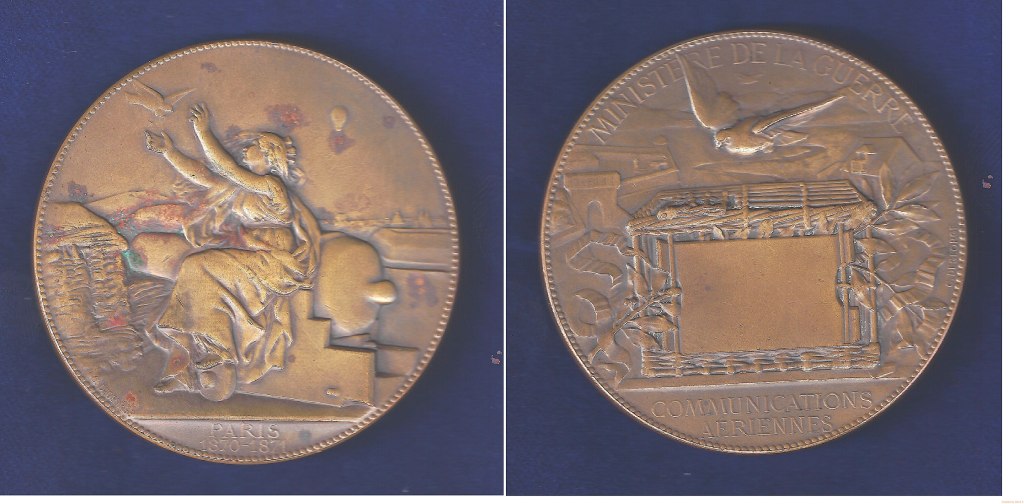by Kolya Abramsky, Assistant Archivist at the George Padmore Institute, London

As the Covid-crisis unfolded, got worse, stabilised, and deepened again many discussions focused on the ‘hi-tech’ questions raised by the ‘Covid-crisis’ for archivists and records managers– the explosion in the use of Artificial Intelligence (AI) and algorithms, and of new remote working tools like Teams, Yammer or Zoom, and the implications for Records Management (RM), Information Governance (IG) and archiving. Instead, I ask whether we might see a resurgence of the most ancient and primitive information technology – carrier pigeons. The question - partly metaphorical, partly literal, and entirely playful - serves as a vehicle for posing uncomfortable questions about information technologies and systems’ vulnerabilities and fragilities in the worsening global crisis.
Pigeons have a long, and surprisingly enduring, role in the history of information and communication technology. From the dove’s pivotal role when Old Noah, so the legend goes, sought evidence of dry land, to the messenger pigeons of the Siege of Paris during the 1870 Franco-Prussian War, to their use in espionage by both sides during World War Two, and the Cold War. Pigeons played a limited, but important, supporting role in these times of systemic breakdown or inter-state conflict, when existing informational channels and technologies buckled or became insecure. Pigeons were used despite the existence of “more modern” information technologies, coexisting alongside the telegraph during the Paris Siege; radio, radar, telephone and code-breaking computers during the Second World War; and the massive Cold War expansion of information technologies including television, satellite broadcasting, early computers and databases.
Despite technological advance, the image of the pigeon has endured. The Universal Postal Union, the UN body on postal communication (founded in 1874), produced commemorative stamps with images of carrier pigeons to mark its 75th and 100th anniversaries. In 1957, similar images adorned Soviet stamps commemorating the ‘International Year of the Letter’. Interestingly, this same year saw that country revolutionise global communication by sending the Sputnik Satellite into space, while the US Army’s Signal Corps disbanded its Pigeon Service, citing “advances in communication systems.
Lest one say, “but that was then, and this is now, ‘The Information Society’ changes everything”, it is worth noting that as recently as 2010-2011 the Chinese People’s Liberation Army announced its 10,000 strong "reserve pigeon army", as an “indispensable” element in “modern warfare”. The motives? “Pigeons are the most practical and effective short and medium distance tool for communications if there is electromagnetic interference or a collapse in our signals".
The current ‘Covid-crisis’ has forced people world-wide to face systemic vulnerabilities and the possibility of systemic collapses: supply chains have ruptured; productive processes, including food production, have been disrupted; air, land and sea transportation has broken down, almost entirely; and, the global workforce has been disrupted.
So far, the world’s digital and informational infrastructure has held out. Staggering numbers of organisations, institutions, enterprises and individuals are ‘Working From Home’ world-wide. This has caused an unprecedented (and growing) explosion of internet use, for leisure (such as Netflix), virtual socialising, and especially for work-based communication through Skype, Zoom, Yammer, Teams, and other fora. There has been an increase in cyber-crimes. Rivalry is growing between Facebook, Zoom, and Google to produce the best remote communications technologies and capture market-share, and the US’ war on Huawei has intensified. However, another unnerving spectre is raised.
As the crisis worsens, could the internet and related global digital infrastructures also rupture, due to the combination of overload and reduced work force due to illness, self-isolating, or strikes? Additionally, digital infrastructure’s reliance on stable electricity supplies and global supply chains for hardware, raw materials and components, adds another layer of vulnerabilities. A temporary or longer-term disruption to the world’s digital infrastructure would massively undermine the fundamental material basis of digital RM, IG and archiving.
In such a far-reaching systemic collapse, might the erstwhile pigeon return, just as lowly candles unfailingly appear as saviours during major electric power outages? Undeniably, pigeon-based communication is horribly slow and unreliable, but, slow and unreliable is better than nothing. It is a matter of relative, not absolute, functionality. And, in the face of growing cyber-attacks, pigeons’ ability to evade detection may offer security. A 21st century cyborg-pigeon carrying gigabytes of digital information on miniaturised memory cards represents a formidable upgrade on the paper, or even micro-film, bearing 20th century pigeon. Pigeons do not ‘spill the beans’ under pressure. And, crucial for the era of self-isolation, pigeon-post is virtually contactless.
‘The cloud’ is the global information infrastructure’s highest level. Nonetheless, the lower levels still exist - from internal onsite hard drives, to wooden shelving. Is there still room for the lowest level of all, the pigeon, to once again fly beneath the clouds? And, how high might it soar should the clouds clear completely? Information practitioners may yet debate whether to destroy, retain or archive that strange, obscure, and thoroughly unfamiliar message tube found on a pigeon’s leg…
To contact the author: kolyaab[at]yahoo.co.uk
